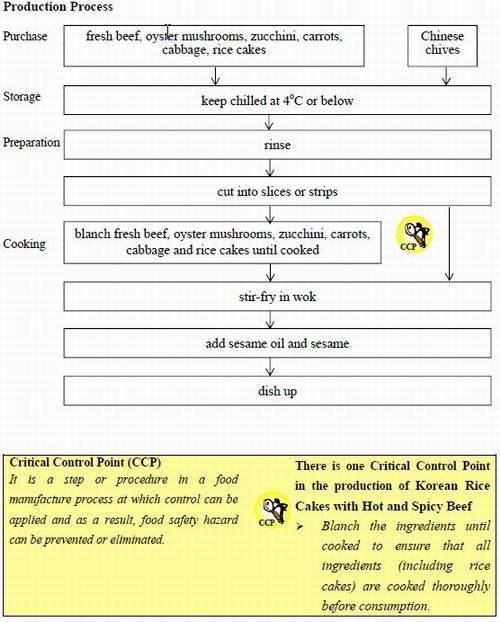
Food Safety Bulletin for Consumers 2014 (2nd Issue)
Feature Article
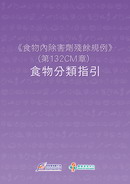
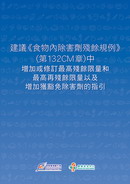
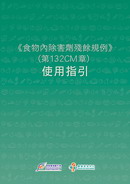
Pesticide Residues in Food Regulation ("the Regulation") (Cap. 132CM)
The use of pesticides is a common practice in agriculture. While proper use of pesticides can enhance and stabilise crop yield as well as provide attractive and appealing food products, improper use may result in pesticide residues in food, which may cause adverse health effects to the public. To better protect public health and facilitate effective regulation, the Administration, in exercise of the power conferred under section 55(1) of the Public Health and Municipal Services Ordinance (Cap. 132), enacted the Regulation to regulate pesticide residues in food. The Legislative Council completed scrutiny of the Regulation in June 2012 and the Regulation came into operation on 1 August 2014.
This feature article gives a brief introduction of the Regulation, with highlights to enable the public and the trade to have a better understanding of the issue.
Requirements of the Regulation
Under the Regulation, all substances which fall within the definition of "food" in the Public Health and Municipal Services Ordinance will be regulated.
The Regulation specifies in Schedule 1 a list of maximum residue limits ("MRLs")/extraneous maximum residue limits ("EMRLs") for certain pesticide-food pairs (i.e. the maximum concentration of specified pesticide residues permitted in specified food commodities). It is an offence under the Regulation to sell food with pesticide residue levels exceeding the prescribed MRLs/EMRLs. The formulation of Schedule 1 to the Regulation was based primarily on the available standards recommended by Codex Alimentarius Commission ("Codex"), supplemented by standards of the Chinese Mainland and other major food supplying countries to Hong Kong, including the United States and Thailand, as well as considerations given to comments received during the public consultation. A risk assessment was further conducted to scrutinise all standards set out in Schedule 1, with a view to ensuring that they were adequate to protect public health in Hong Kong.
Schedule 2 of the Regulation specifies a list of exempted pesticides which have been exempted from the formulation of MRLs/EMRLs in food.
For pesticide-food pairs with no specified MRLs/EMRLs in Schedule 1, the Regulation stipulates that except for exempted pesticides, import or sale of food containing such pesticide residues is only allowed if consumption of the food concerned is considered not dangerous or prejudicial to health based on risk assessment conducted by the Centre for Food Safety ("CFS").
Preparation for Implementation of the Regulation
During the grace period, CFS conducted a series of briefings and technical meetings for different sectors. CFS has also prepared guidelines on the interpretation of MRLs/EMRLs in the Regulation as well as the use of Codex's food classification to identify the appropriate pesticide residue limits to assist the trade in complying with the requirements of the Regulation. Some of the frequently asked questions and their answers in relation to the Regulation have been uploaded to CFS' website for reference of the trade.
How is the law enforced?
Through the Food Surveillance Programme, CFS takes food samples at the import, wholesale and retail levels for analysis to ensure food on sale is fit for human consumption. This also covers the scope of the Regulation. It is an offence to sell food with pesticide residue levels exceeding the MRLs/EMRLs prescribed in the Regulation. As regards pesticide-food pairs with no specified MRLs/EMRLs in Schedule 1 of the Regulation, the general principle is that except for exempted pesticides, import or sale of the concerned food will only be allowed if consumption of the food is not dangerous or prejudicial to health. CFS will conduct risk assessments to decide whether consumption of the food concerned is dangerous or prejudicial to health. Therefore, importers, wholesalers and retailers (including vegetable traders and restaurants) should seek clarification from their suppliers to make sure food on sale for human consumption complies with the local legislation, and keep relevant transaction documents for record. Upon detection of irregularities in the pesticide residue levels of food on sale, CFS will initiate prosecutions against the parties concerned when it has sufficient evidence.
In addition to legislative control by the Government, the trade should note the following to protect the health of consumers:
- Farmers should observe good agricultural practices, including using permitted pesticides and observing label instructions and pre-harvest intervals; and
- Importers, wholesalers and retailers should seek clarification from their suppliers to make sure food on sale for human consumption complies with the local legislation.
Readers' Corner
Keys to Food Safety in Preparing Poultry and Poultry Eggs
There were concerns over the possibility that avian influenza could spread to humans through the handling and consumption of poultry and poultry eggs. On the basis of current scientific evidence available, there is no epidemiological information to suggest that the disease can be transmitted through thoroughly cooked food (even if contaminated with the virus prior to cooking). The risk of contracting avian influenza and infection by micro-organisms such as Salmonella can be reduced by cooking poultry meat and poultry eggs thoroughly before consumption. It is important to keep the following safety tips in mind when handling and preparing poultry and poultry eggs:
Purchase:
- Avoid touching chickens or their faeces when buying live chickens.
Storage:
- Keep raw poultry meat in a well-covered container and then store it in a refrigerator at 4oC or below;
- Store shell eggs in a refrigerator;
- As a general rule, poultry eggs need not be washed. However, if eggs are soiled with faecal matter, they can be washed. Washed eggs should be used immediately; and
- Avoid consuming eggs with cracked shell as they are prone to be contaminated.
Handling:
- After handling live poultry, poultry products or poultry eggs, wash hands thoroughly with soap or liquid cleanser;
- Clean thoroughly all working surfaces, utensils and equipment that have been used for handling poultry products or eggs; and
- Use separate knives and chopping boards to handle raw food and ready-to-eat food.
Cooking:
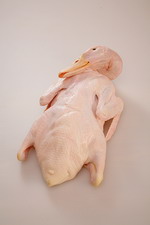
- Do not eat raw eggs or dip cooked food into any mixed sauce of raw eggs. Cook poultry eggs thoroughly until the white and the yolk become firm;
- Cook poultry thoroughly before consumption. The centre of poultry meat should reach 75oC continuously for at least 30 seconds; and
- If there are pinkish juices running from the cooked poultry or the middle parts of the bones are still red in colour, cook the poultry again until fully done.
Keep the Cooking Oil Safe
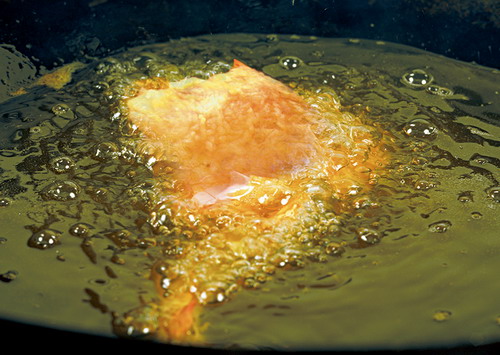
People are becoming increasingly particular about the oil used for cooking. In response to demand, traders has put on the market different types of cooking oil, such as olive oil, sunflower oil, canola oil, tropical palm oil, and rice bran oil. Choosing a healthy cooking oil is important, yet at the same time safe use of cooking oil should not be neglected. As cooking oil is heated to high temperature, it may undergo various changes (e.g. chemical reactions, increase in viscosity, darker in colour and even develop rancidity) and produce substances which may affect human health, such as polycyclic aromatic hydrocarbons (PAHs), including carcinogenic benzo[a]pyrene. In general, these substances increase with the duration and temperature of heating. The following guidelines should be observed when cooking:
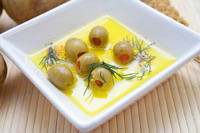
- Do not reuse cooking oil;
- Select the lowest possible cooking temperature;
- Choose cooking oil of good quality and consistent stability;
- Optimise the useful life of cooking oil; and
- Store cooking oil in a tightly closed container at a cool, dry place to avoid deterioration.
Info Corner
Food Safety Tips
Soft ice-cream is a popular treat to cool off from the summer heat. When buying and eating soft ice-cream, however, one must pay attention to the following to ensure that it is safe for consumption:
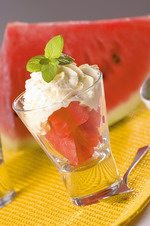
- when buying soft ice-cream, observe the hygienic conditions of the shops including the environment therein, the machines and utensils used in handling the ice-cream;
- consume soft ice-cream immediately;
- do not buy and consume any ice-cream which has passed its expiry date or is not of good quality; and
- maintain a balanced diet and avoid overindulging in ice-cream as it is generally high in energy.
News on New Dishes
Korean Rice Cakes with Hot and Spicy Beef
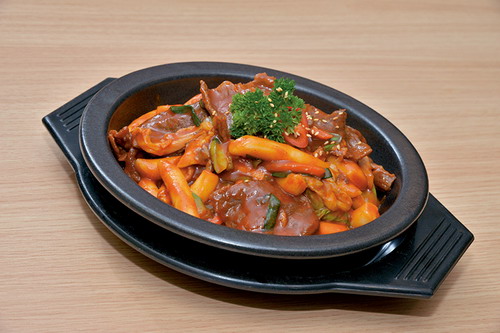
The Korean cultural wave has swept Hong Kong off its feet in recent years and has lately arrived at CFS! In this issue, we are honoured to have invited Chef Mr HUANG Zi and Area Manager Mr Andrew LIU of "Baab", a signatory of the Food Safety Charter, to demonstrate how to prepare the dish "Korean Rice Cakes with Hot and Spicy Beef".
| Preparation Steps | Small Tips, Big Wisdom | ||
|---|---|---|---|
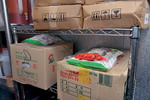 |
Receiving | Purchase fresh beef, rice cakes, chilli sauce and other ingredients from approved and reliable sources. | Upon receipt of the ingredients, check with meticulous care to ensure their freshness. Ingredients such as beef and rice cakes should be kept under refrigeration at 4oC or below before use. |
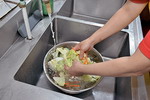 |
Rinsing | Soak and rinse vegetables (including oyster mushrooms) thoroughly. | Soaking makes the oyster mushrooms tender. Apart from preparing the mushrooms for further handling, soaking helps remove effectively the impurities such as sand and mud. |
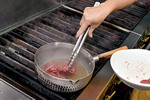 |
Blanching | Blanch beef, rice cakes, oyster mushrooms, cabbage, zucchini and carrot strips in hot broth. Drain them dry when cooked. | Blanching is a method of cooking which can ensure that ingredients are cooked thoroughly and takes less time than stir-frying raw ingredients to done. |
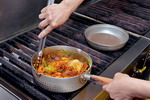 |
Stir-frying | Add chilli sauce and Chinese chives after the above ingredients have been blanched until cooked and drained. Heat the wok over high heat and stir-fry the ingredients until fragrant. | Brisk stir-frying in wok makes ingredients more delicious and ensures that they are cooked thoroughly. |
Tips from Chef WONG:

- "Baab" uses thinner Korean rice cakes. If wider or thicker types of rice cakes are used, it is suggested to firstly cook the rice cakes until cooked (as it takes longer for the rice cakes to get done) before putting in other ingredients to ensure that all the ingredients are cooked thoroughly.
- The Chef also suggested soaking the rice cakes to soften the middle before blanching. This procedure helps shorten the time for the rice cakes to get done when blanching. Moreover, he suggested allowing the ingredients to sit in pot with the lid on for a while during the blanching process. This can shorten the time for the ingredients to get done and ensure that they are cooked thoroughly.
- When finished, adding sesame oil and sesame can make the dish even tastier!
- Quality ingredients are the cornerstone of all tasty dishes. The restaurant purchases ingredients from reputable and licensed suppliers. Orders are placed according to the estimated consumption of that day to ensure that fresh ingredients are used every day.
- Upon receipt of the ingredients and before cooking, the staff will thoroughly check whether there are any problems with the ingredients such as being damaged on their surfaces or giving out unpleasant smell. The ingredients will be discarded at once and the suppliers concerned will be informed if problems are found, even minor ones.
- "Baab" has established a supervisory system to ensure cleanliness of food and environment. Various codes of hygiene and operational guidelines have been laid down for staff members, who are also provided with on-the-job hygiene training to make sure that they understand and comply with these codes and guidelines.
Answers: 1b, 2c, 3a, 4d
Food Safety Plan Corner
Korean Rice Cakes with Hot and Spicy Beef
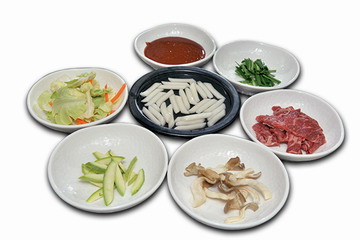
Ingredients:
Fresh beef, oyster mushrooms, zucchini, carrots, cabbage, Chinese chives, rice cakes and broth
Seasoning:
Chilli sauce and sesame oil
Steps:
- Rinse the fresh beef, oyster mushrooms, zucchini, carrots, cabbage and Chinese chives and cut them into slices or strips
- Blanch the ingredients (excluding Chinese chives) in hot broth. Drain them dry when cooked.
- Add chilli sauce to Chinese chives and stir-fry until cooked. Add the drained ingredients and stir-fry until fragrant.
- Add sesame oil and sesame. Ready to serve.
Briefing of Activities
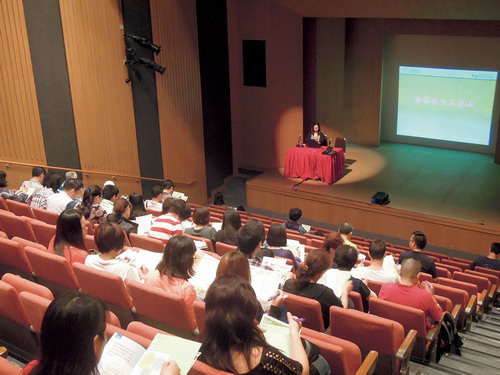
Food Hygiene Seminar (Public Series)
CFS organises four sessions of Food Hygiene Seminar (Public Series) on the theme of "5 Keys to Food Safety" from July to December this year. The Seminar aims to enable the public to have a better understanding of the common food safety problems encountered today and provide handy tips to them on safe food preparation, making a wise food choice and buying food / food ingredients from hygienic and reliable shops. Public awareness on food safety and healthy eating will be enhanced through participation in the Seminar. Members of the public and employees of the food business are welcome to attend the Seminar, which is free of charge and conducted in Cantonese. All participants will be awarded a certificate of attendance and a souvenir. For details, please visit the website of the CFS (www.cfs.gov.hk).
Upcoming Activities
Food Safety Day 2014
Safe and Smart Ways to Cook
Food Safety Day is an annual signature event of CFS with the objective to promote food safety through the tripartite efforts of the Government, the food trade and the public. Food Safety Day 2014, together with the final round of the Secondary School Food Safety and Nutrition Labelling Quiz Competition, were held on 4 July 2014 at Chiang Chen Studio Theatre of The Hong Kong Polytechnic University. Under the theme of "Safe and Smart Ways to Cook", Food Safety Day 2014 aims to promote healthy cooking methods for ensuring food safety. The event covers a series of talks for members of the public and the trade. Information on the talks has been uploaded to CFS' website. Your participation is most welcome! Below are the details of the talks:
'| Date and time | Venue | Target |
|---|---|---|
| 7.7.2014 (Monday) 3:00 to 5:00 p.m. |
Cultural Activities Hall Tsuen Wan Town Hall 72 Tai Ho Road, Tsuen Wan |
Public |
| 24.7.2014 (Thursday) 3:00 to 5:00 p.m. |
Lecture Theatre Hong Kong Central Library 66 Causeway Road, Causeway Bay |
Trade |
| 28.7.2014 (Monday) 3:00 to 5:00 p.m. |
Function Room 2 Tai Po Civic Centre 12 On Pong Road, Tai Po |
Trade |
| 1.8.2014 (Friday) 3:00 to 5:00 p.m. |
Lecture Theatre Hong Kong Central Library 66 Causeway Road, Causeway Bay |
Public |
| 2.9.2014 (Tuesday) 3:00 to 5:00 p.m. |
Lecture Theatre Hong Kong Central Library 66 Causeway Road, Causeway Bay |
Trade |
| 15.9.2014 (Monday) 3:00 to 5:00 p.m. |
Black Box Theatre Kwai Tsing Theatre 12 Hing Ning Road, Kwai Chung |
Trade |
| 9.10.2014 (Thursday) 3:00 to 5:00 p.m. |
Lecture Theatre Hong Kong Central Library 66 Causeway Road, Causeway Bay |
Public |
| 22.10.2014 (Wednesday) 3:00 to 5:00 p.m. |
Auditorium North District Town Hall 2 Lung Wan Street, Sheung Shui |
Trade |
| 5.11.2014 (Wednesday) 3:00 to 5:00 p.m. |
Lecture Room 1 Tuen Mun Town Hall 3 Tuen Hi Road, Tuen Mun |
Trade |
| 15.12.2014 (Monday) 3:00 to 5:00 p.m. |
Function Room 2 Hong Kong Cultural Centre Administration Building, 10 Salisbury Road, Tsim Sha Tsui |
Public |
Telephone enquiry number: 2381 6096
Food Safety Q&A
Q: The nutrition information on the nutrition label can be expressed in terms of "per 100 g or 100 mL", "per serving" or "per package". What are the differences between them?
A: At present, there are three ways to express the energy and nutrient content on the nutrition label, i.e. per 100 g or 100 mL, per serving or per package.
By expressing the energy and nutrient content on the nutrition label in the same reference amount of food, i.e. per 100 g or 100 mL, you can easily compare the contents of different products.
One serving is the amount of food people usually eat in one sitting. Based on the number of servings you eat, you can determine the energy and nutrient intake with reference to their values expressed as per serving.
When a food product is usually consumed as a single serving, the energy and nutrient content may be expressed as per package, e.g. a small container of yogurt or a can of soft drink. In other words, if you consume the whole package of food/drink, you will get the energy and nutrient content as stated on the nutrition label.
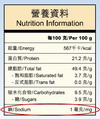
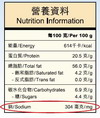
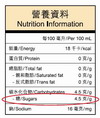
Truth against Fallacy
Infant Formula with Trans Fats – Not Fit for Consumption?
Trans fats are unsaturated fats with at least a double bond in trans configuration. Trans fats can come from natural sources or be formed during food processing.
Natural trans fats occur at low levels in milk and dairy products (e.g. cheese, butter), meat of ruminants (e.g. cattle, sheep, goats), and in human breast milk. In ruminants, a small amount of trans fats may be formed when microbes in the animal's stomach convert unsaturated fats to saturated fats. Depending on the breed, the feed and the season, dairy products and beef fat typically contains trans fats at 3% to 6% of total fat.
The trans fats detected in infant formulae are likely from milk fat and vegetable oils. Since trans fats are endogenous components of milk fat, the Codex Alimentarius Commission (Codex) allows the use of milk fat in infant formulae and accepts up to 3% of total fatty acids from trans fats. However, according to Codex standard, commercially hydrogenated oils and fats shall not be used in infant formulae.
Excessive trans fats intake increases the risk of coronary heart diseases (CHD) through raising low-density lipoprotein cholesterol (the harmful cholesterol) and reducing high-density lipoprotein cholesterol (the beneficial cholesterol) in the blood. The Food and Agriculture Organization of the United Nations recommends that for children aged 2 to 18 years and adults, the dietary intake of trans fats, including from ruminant and industrially-produced sources, should be less than 1% of their daily energy intake. This is because there is convincing evidence that trans fats from commercial partially hydrogenated vegetable oils increase risk of CHD. However, currently there is no evidence that trans fats intake has a safety issue in infants and young children under the age of 24 months. Trans fats are not synthesised by the human body and are not required in the diet. Whilst natural trans fats cannot be removed entirely from the diet, their intake is low in most populations worldwide and to date there is no conclusive evidence showing an association between CHD risks and the amount of natural trans fats usually consumed. In contrast, trans fats formed during food processing have no health benefits but clear risks to health.
Advice to Consumers
Breast milk is the ideal food for the healthy growth and development of infants. When it is necessary to choose infant formulae, they should be purchased from reliable sources.
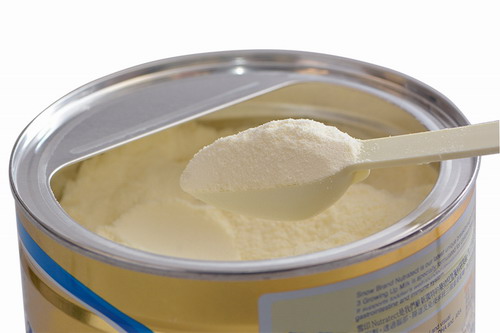
Download the Food Safety App Now to Receive Food Safety Information Anytime, Anywhere
CFS has launched the Food Safety App. The new app, which serves as a portal, allows members of the public to receive food alerts and latest news on food safety released by CFS through their mobile devices. Users can also search for relevant information and advice, download publications, set up archives and read articles on various food safety topics on the App.
How to Download
Users may search for keywords like "food safety", "cfs" or "Centre for Food Safety" at the Hong Kong App Store (for iPhones) or the Google Play (for Android phones) websites in order to download the App.
To download at the Google Play website:
(https://play.google.com/store/apps/details?
id=com.fehd)
To download at the iTunes website:
(https://itunes.apple.com/hk/app/shi-wu-an-quan-food-safety/id809676158?ls-1&mt=8)
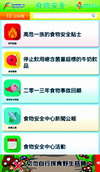
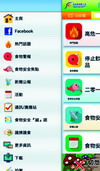

Alternatively, users may make use of the Quick Response (QR) Codes on the right to download the App.
For any enquiries on the newly-launched Food Safety App, please contact us at 2868 0000.




Brain Gym
How to effectively reduce the risk of being exposed to the following substances?
| 1. Ciguatoxins |
•
|
•
|
a. | Avoid cooking food for too long or at too high temperatures | |
| 2. Dioxins |
•
|
•
|
b. | Consume less coral reef fish, especially those weighing over three catties | |
| 3. Acrylamide |
•
|
•
|
c. | Maintain a balanced diet and reduce the intake of fat | |
| 4. Aflatoxins |
•
|
•
|
d. | Avoid consuming food that looks mouldy or damaged |
(Answers can be found on page 6.)
Enquiry and Subscription
Printed copies of the Food Safety Bulletin can be obtained from the Communication Resource Unit located at 8/F, Fa Yuen Street Municipal Services Building, 123A Fa Yuen Street, Mong Kok, Kowloon. For enquiry, please call 2381 6096. The public may also visit the website of the CFS (http://www.cfs.gov.hk) for the online version.
